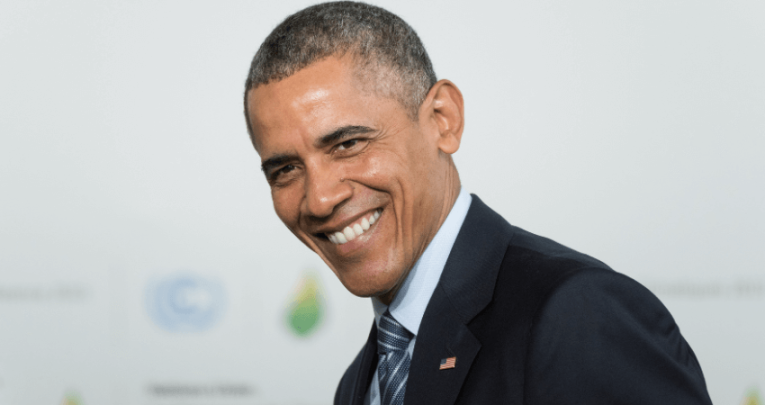KS2 writing exemplification – Learn to write like an American President

The pen is more powerful than the sword, so lean into lessons from some of the US’ finest, and teach your class to compose like a Commander in Chief

- by Alex Quigley

To succeed in the most powerful job in the world, you need to learn to wield a pen. From founding fathers like Benjamin Franklin, to modern-day presidents like Barack Obama, the humble instrument has proved just as mighty as the sword. Use the lessons we can learn from American presidents past and present for KS2 writing exemplification.
Let’s turn the page on the likes of Donald Trump and explore how Obama wrote himself into the hallowed pages of history.
Model texts
Perhaps unsurprisingly, the former president cites lots of early reading as the key to becoming a skilled writer.
His voracious reading His voracious reading saw him consume, and then mimic, his favourite writers, such as the brilliant Black Americans Ralph Ellison and James Baldwin.
For primary-age pupils, mimicking the style of mature writers is an essential step in the process of finding their own voice.
Often, we pose great writing – like a speech from Obama or Martin Luther King – as models. However pupils can find it too hard because there is simply too much sophistication.
Instead, we can retain the model, but likely shrink the challenge to imitating a single sentence.
For example, let’s take an Obama sentence like: ‘A change is brought about because ordinary people do extraordinary things’. We can begin to play with its language as a method of KS2 writing exemplification. What if ‘a change’ became ‘a dream’, or ‘ordinary’ was substituted for ‘everyday’?
The mimicry of stirring rhetoric from a prominent president can offer vital modelling for our present-day pupils.
Writing practice
Arguably the most famous of all American writers, Benjamin Franklin, didn’t quite become president, but he helped create the role as a founding father.
Born in 1706, he played a huge part in building the America we know today and writing it into the history books.
Before he became a founding father in the first US government, Franklin was born into poverty. He left school at just 10 years of age.
His story of teaching himself to write is quite famous, too. Franklin, without a teacher, was determined to be a great writer.
The Spectator was Franklin’s magazine of choice. Akin to Obama, he recognised some early mimicry was essential to developing a skilful writing style.
In the polished English prose of the magazine, he saw the writing he aspired to compose.
And yet, he also recognised his own very limited vocabulary and error-strewn sentences.
Stung into action by his father’s criticism that his writing was ‘far short in elegance of expression, method, and perspicuity’, this determined teen would set about teaching himself with a method that maintains plenty of relevance (and plenty of KS2 writing exemplification!) for teachers and would-be writers today.
Strategies for improving writing in primary schools
Franklin had three different but related strategies to learn how to write like an all-time-great.
First, like Obama, he would read voraciously. He would select great-quality articles from copies of The Spectator.
Then he would test his knowledge and memory for those writerly moves:
Trending
‘I took some of the papers, and, making short hints of the sentiment in each sentence, laid them by a few days, and then, without looking at the book, try’d to compleat [sic] the papers again… in any suitable words that should come to hand. Then I compared my Spectator with the original, discovered some of my faults, and corrected them,’ reports Franklin’s Autobiography and Other Writings.
This ‘text reconstruction’ has the ingredients of memorable, deliberate practice.
By imitating the stylish articles, forcing a little forgetting (deploying what cognitive scientists may term as ‘spacing’), Franklin would come to remember powerful vocabulary and to pick up the patterns of the type of writing he would go onto imitate and ultimately surpass.
Franklin’s second strategy was translating prose to poetry, and back again.
This strategy could have come straight from Ancient Rome when it was commonplace. But why shift from prose articles to poetry?
Franklin himself described his approach, again in his Autobiography and Other Writings:
‘Therefore I took some of the tales in The Spectator, and turned them into verse; and, after a time, when I had pretty well forgotten the prose, turned them back again. By comparing my work with the original, I discovered many faults, and corrected them.’
Articulating prose as poetry, with its regular rhythms and structures, forced Franklin to choose different, more fitting vocabulary.
Once more, it would give him purposeful practice to work with language, sentence structures, and the subtle rhythms a writer learns over a time.
Finally, Franklin’s third approach was to focus on crafting a well-structured piece of writing.
He was again asserting his own degree of difficulty – to make the practice hard, but worth it – by jumbling up his sentence notes to force him into restructuring entire texts.
He would have to consider the regular patterns, and parts, of texts.
What still applies?
A key approach that Franklin and Obama share is shedloads of purposeful writing practice.
They both undertook a series of tricky challenges that forced them to consider word choices, sentence choices, and whole text structures.
Another key ingredient was imitation. They say great artists steal – well great writers imitate.
KS2 writing exemplification exercises – such as collecting good examples of writing, copying them out, forgetting them, and trying to remember them again – can help our young writers.
Every teacher, and pupil, can practise like a president and develop their ability to wield power with the humble pen.
5 presidential teaching strategies
- Read, read, read. For a developing writer, there is no substitute for ample reading when it comes to absorbing the styles and structures of great authors. Wide reading offers pupils vital exposure to the rich vocabulary and approaches that they will need for academic success.
- Imitate stylish sentences. It can be too much for a novice to absorb an entire great speech or story. We can focus on imitating stylish sentences instead, copying their structure, switching their words, adding to them, or shrinking them.
- Style switches. Rather than simply imitate a famed speech or a slick story opening, we can get pupils to discriminate between the different styles they can deploy for effect. For instance, they could take a formal, lofty Obama sentence and make it short and plain. Equally, they can take old-fashioned writing and make it modern.
- Turn poetry into prose (or vice versa). Pupils often struggle to understand the unique differences between poetry and prose. By modelling and practising the translation between the genres, we offer a clever way to aid deeper understanding, as well as undertaking some stylish writing and vocab practice.
- Jumbled texts. With a little help from technology, or some scissors, we can jumble up sentences or paragraphs and get pupils to reconstruct the text. In doing so, children begin to recognise the language patterns and the typical transitions that signpost and structure successful writing.
Alex Quigley is the author of Closing the Writing Gap. A former teacher, he is now the head of content and engagement at the Education Endowment Foundation, alongside his personal writing and training for teachers.










